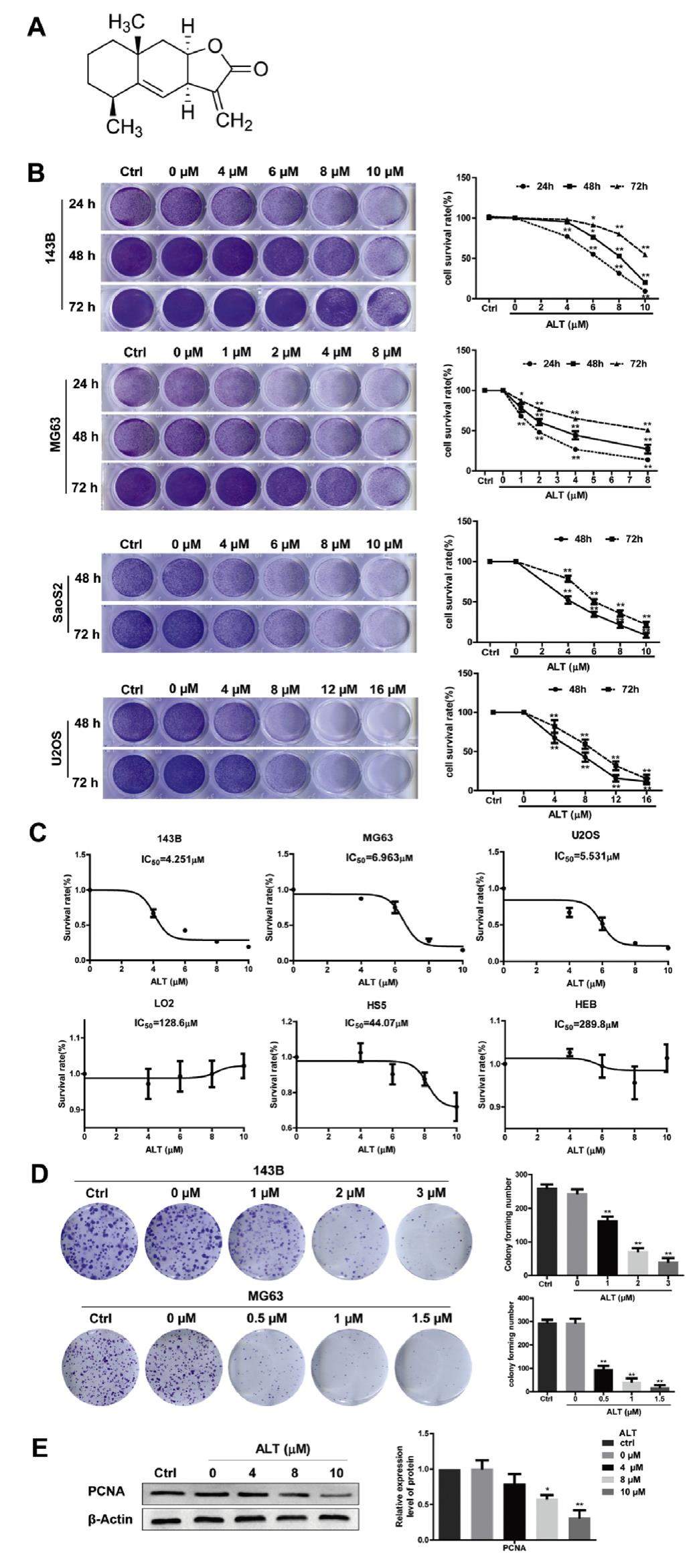
Alantolactone inhibits proliferation, metastasis and promotes apoptosis of human osteosarcoma cells by suppressing Wnt/β-catenin and MAPKs signaling pathways


Although there are many therapeutic strategies such as surgery and chemotherapy, the prognosis of osteosarcoma (OS) is still far from being satisfactory. It is urgent to develop more effective, tolerable and safe drugs for the treatment of OS. In the present study, we investigated the anti-OS activity of Alantolactone (ALT), a natural eucalyptone sesquiterpene lactone mainly exists in Inula helenium, and probed the possible mechanism involved. We demonstrated that ALT significantly inhibited cell proliferation of various human OS cell lines while had relative lower cytotoxicity against normal cells. Then, we validated that ALT reduced migration, decreased invasion possibly through reversing epithelial mesenchymal transition (EMT) process and suppressing Matrix metalloproteinases (MMPs). Moreover, we confirmed that ALT promoted apoptosis and arrested cell cycle at G2/M phase of human OS cells in vitro. In addition, we confirmed that ALT restrained tumor growth and metastasis of OS 143 cells in a xenograft model in vivo. Mechanistically, ALT inhibited the activity of Wnt/β-catenin and p38, ERK1/2 and JNK Mitogen Activated Protein Kinases (MAPKs) signal pathway. Notably, the combination of ALT and Wnt/β-catenin inhibitor, as well as the combination of ALT and MAPKs inhibitors resulted in a synergistically effect on inhibiting the proliferation, migration and invasion of OS cells. Collectively, our results validate the ALT may inhibit proliferation, metastasis and promotes apoptosis of human OS cells possibly through suppressing Wnt/β-Catenin and MAPKs signaling pathways.
